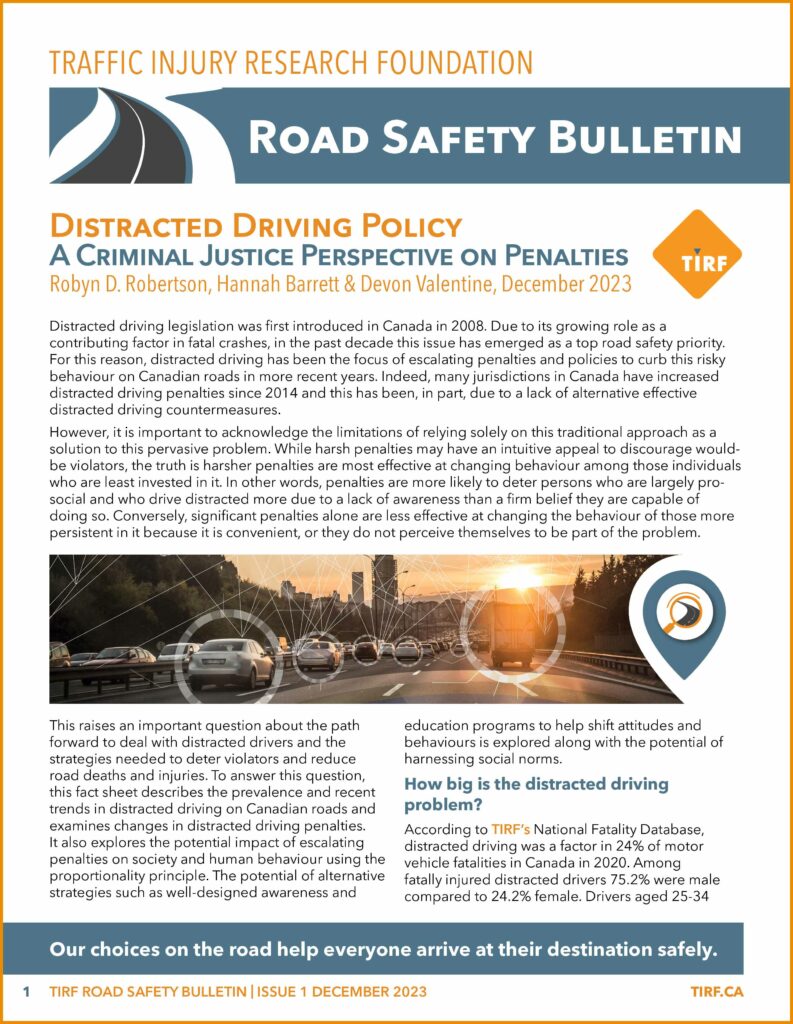TIRF’s new fact sheet describes the prevalence and recent trends in distracted driving on Canadian roads and examines changes in distracted driving penalties. It also explores the potential impact of escalating penalties on society and human behaviour using the proportionality principle. The potential of alternative strategies such as well-designed awareness and education programs to help shift attitudes and behaviours is explored along with the potential of harnessing social norms.

Employers and targeted programs for violators represent an opportunity to achieve the next big gain in making roads safe. The delivery of effective workplace safety programs that include a road safety component, as well as evidence-based remedial programs for violators are worthy of more exploration to encourage and strengthen positive social norms which make distracted driving unacceptable.
Download Distracted Driving Policy: A Criminal Justice Perspective on Penalties
